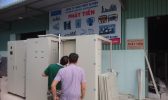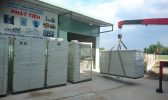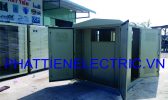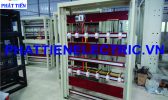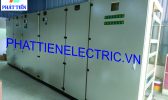Power Saving – A Needs Needs
This article will suggest some simple solutions, easy to implement, low investment cost, high efficiency, long term benefits … can apply to all factories, large enterprises, small … to each household The family uses 1.2 air conditioners.
We want to introduce to an important, cheap, silent electrical equipment: CAPS. Every household consumes electricity using two types of power: power – ie P – in kilowatt (or kVA) and inertia – ie Q – in kVAR. Both of these types of power must be transferred from the power plant to the booster station, via a high voltage conductor, to a low voltage substation, to a conductor, to electrical equipment in every plant or household. There are many differences between P and Q, the most worth mentioning about this difference is the inequality Q – which can be produced locally, ie at the factory, factory or at the power station. Through a silent electric device: it is CAP. Q is the agent of the performance of all steel-coil components – electric motors, ballasts, fluorescent lamps, air conditioners, and many other electrical appliances. Compared to many years ago, thanks to new technology, new materials and large volume production, the cost of compensation today is very cheap. Capacitor manufactured by Italy – Enerlux brand, smallest 10kVAR. Installing suitable capacitors will save power by 10% – 20% of the indicator on the galvanometer as well as power down also correspondingly.
In previous years, due to high prices, the cost of installation of capacitors and protective equipment is relatively large, it takes 5 to 7 years to benefit from new energy saving equalized with cost; At present, the price is low, the payback period is only 2 to 3 years, and the compensation is silent continuously to save electricity, bringing long-term benefits to customers.
In advanced countries, the compulsory electric power-saving procedure requires that every large electrical device, such as a large motor, be placed immediately at the motor location. Capacitors of all sizes, from 10 – 15, 20, 30, 40 kVA.
Next we would like to propose an easy-to-implement power saving solution, not using low-quality power wires; Do not use conductors of copper or aluminum that are recycled, reheated, or contaminated. It is the high temperature in the conductor and numerous connections from low-quality electrical wires, which not only cause power loss but also high electricity consumption, but also cause fires in homes and factories from burning wires. low quality.
By this paper, we want to contribute a relatively high technical and technical expertise, a wide scope of application, especially for power saving issues for a medium and large size plant.
In Vietnam, for a medium size and relatively large factory, usually only build a main source station, located only in one place, usually in front yard, far away from the load, concentrated capacity at the station. This single source is sufficient to supply the entire enterprise. It is this habit of installing a classical power station that is slowly improving, causing great power loss to the plant. Low voltage 220 – 380A up to a few hundred, even thousands of Ampere runs in a very large conductor system (copper cable 180, 240, 300mm2) long, where there are thousands of meters, causing extremely low voltage losses. Large, from 10-15%.
In Korea, where the loss of the entire national power system is only 5.5%, the installation procedure for a factory requires the owner to split the total source of dozens of small transformers fitted. Put on the ceiling of each floor. Thanks to the cost of medium-voltage leads becoming increasingly cheap (while the price of non-ferrous metal is always very high), due to the very small conductor cross section, both the medium and low voltage lines are connected. Lowered by the source station located next to the factory each factory in Korea save a lot of electricity compared with the factory in Vietnam.
Electricity savings are more complex issues, need capital large. For the purpose of this article, the author wants to mention some solutions he thinks are simple, inexpensive, easy to implement, easy to apply on a wide scale from a factory leader to a home owner



